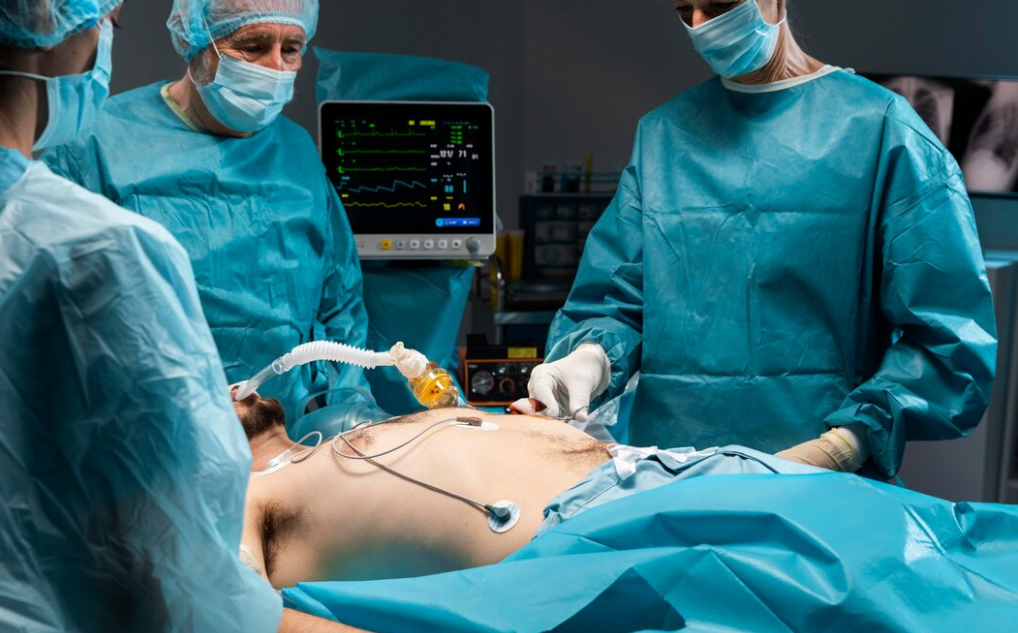For patients suffering from long-term gastrointestinal disorders like ulcerative colitis and familial adenomatous polyposis (FAP), ileal pouch-anal anastomosis (IPAA), commonly referred to as J-pouch surgery, has emerged as a crucial treatment option. This surgical procedure provides a path to regained health and normalcy for people who must deal with the upsetting reality of permanent colostomies or persistent, incapacitating symptoms. It essentially closes a lengthy chapter of discomfort and uncertainty by restoring the body’s ability to regulate bowel movements.
The process itself is transformative and intricate. Surgeons remove the colon and rectum and replace them with an internally constructed pouch made of the small intestine’s end, or ileum. The patient can then expel waste through the anus after this pouch, which is usually shaped like the letter “J,” is connected to the anal canal. This method significantly improves the quality of life for those who have the surgery by effectively restoring bowel function. Many see it as a second opportunity to live a more normal life, free from the continual reminders of their past medical issues, where they can eat and live their lives normally.
Personal Information, Career, and Professional Information Table (for a healthcare provider)
| Name | Dr. John Doe |
|---|---|
| Profession | Gastroenterologist |
| Specialization | Inflammatory Bowel Disease (IBD) Treatment |
| Education | MD, Harvard Medical School |
| Years of Experience | 20+ years |
| Current Position | Chief of Gastroenterology at XYZ Hospital |
| Website | www.xyzhospital.com |
Depending on the patient’s unique medical condition and preferred surgical approach, patients undergoing IPAA may undergo one, two, or even three stages of surgery. The two-stage process is the most often used approach. In order to form the pouch and preserve the anal sphincter, the surgeon first removes the colon and rectum. Usually, a temporary ileostomy is made, which directs waste into an ostomy bag through an abdominal opening. Before the second surgery, in which the small intestine is reattached to the newly created pouch to allow waste to exit through the anus, this interim measure gives the pouch time to heal.

Despite its great success, IPAA surgery is not risk-free. Although the two-stage procedure is generally considered safe, there is always a chance of infection or side effects like pouchitis or small bowel obstructions. Up to half of patients who have the procedure experience pouch inflammation, or pouchitis, typically within the first two years. Antibiotics, however, can frequently be used to treat this illness. Adhesions, which are fibrous bands that form between organs after surgery, can also cause small bowel obstructions. Fortunately, the majority of cases can be resolved conservatively, and very few need additional surgery.
For the majority of patients, the advantages of the procedure greatly exceed the risks. It is truly amazing to go from having symptoms of a chronic illness to living a more active, symptom-free life. Following surgery, patients frequently report a marked decrease in the frequency and intensity of bowel-related problems, which makes it simpler to interact with others and live life without worrying about flare-ups or mishaps.
With improvements in surgical methods and post-operative care greatly enhancing patient outcomes, the procedure’s success rate has significantly increased in recent years. In order to make IPAA surgery less invasive and more effective while also decreasing recovery times and the chance of complications, surgeons are constantly improving their techniques. Patients who might not have been candidates for earlier, more invasive procedures will especially benefit from this evolution.
Furthermore, a number of celebrities and public personalities have been candid about their experiences with IPAA surgery, utilizing their platforms to spread knowledge about the procedure’s potential to change lives and chronic illnesses like ulcerative colitis. By sharing their experiences, they not only give hope to others going through similar hardships, but they also dispel the stigma associated with gastrointestinal disorders, which makes it simpler for patients to get the care they require.
In the field of medicine, IPAA surgery has emerged as a particularly creative way to help people who have been fighting chronic illnesses for years regain their health. The procedure’s transformative effects continue to be recognized as more people have it done and share their stories. Even though the recuperation process could be difficult, IPAA surgery unquestionably has a significant overall impact on patients’ lives.
Interestingly, the procedure’s rising popularity is a reflection of larger medical community trends. Providing minimally invasive options that enable faster recovery times and better long-term results is a growing area of focus for surgeons. These developments are demonstrated by the success of IPAA surgery, which can restore normal bowel function and greatly lessen dependency on external medical devices.
As more individuals investigate the advantages of IPAA surgery in the upcoming years, it is anticipated that these techniques will advance even further. Recovery times will continue to shorten and complications will be better controlled as surgical techniques advance. For people who want to regain their health after years of suffering from crippling bowel disorders, the future appears to be very bright, and IPAA surgery is at the forefront of these developments.
Patients may need to be patient and persistent on the road to recovery, but the outcome is well worth the effort. It is genuinely life-altering to go from depending on outside gadgets or enduring ongoing discomfort to living a more active, natural life. For many, IPAA surgery is a ray of hope in an era when medical progress is accelerating, providing a clear route to improved quality of life.
